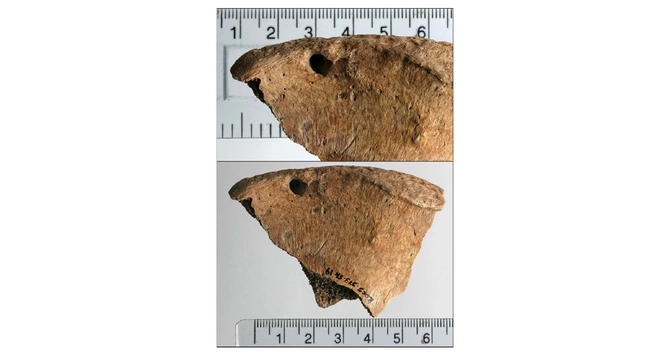Archaeologists have found the first direct evidence of a gladiator fighting a lion

British archaeologists have made a unique discovery that sheds light on the bloody games of Ancient Rome.
During excavations of an ancient cemetery in the city of York, which in the Roman era was called Eboracum, scientists discovered the skeleton of a beheaded gladiator with traces of lion bites. This is the first material evidence that gladiators fought with predatory animals not only in the Colosseum but also in the arenas of provincial cities of the empire.

The discovery was made in a cemetery where predominantly young men were buried, whose remains bore the mark of gladiatorial combat. The skeleton of the presumed gladiator, who lived in the 4th century CE, was lying on his back in a grave along with two other people. The fighter's head had been severed by a blow between the second and third cervical vertebrae and carefully placed in an anatomically correct position.
However, the main clue pointing to the cause of the gladiator's death was damage to the pelvic bones. After creating a 3D model of the injuries, scientists concluded that they were inflicted by a large predator from the cat family, most likely a lion. The nature of the bites suggests that the beast was not so much attacking the victim as gnawing on the body at the moment of death.

"We have presented the first material evidence found in Europe of gladiator fights with animals in the Roman period," emphasizes the study published in the journal PLOS One. "The beheading was possibly performed either to relieve the wounded gladiator from suffering or at the request of spectators."
David Jennings, director of the York Archaeological Trust, who did not participate in the research, called the find "the archaeological discovery of the century." "This is the first osteoarchaeological evidence of such a gladiator battle found so far from the Roman Colosseum, which was considered the main arena for such fights," the scientist noted.
Gladiatorial combat was an integral part of life in Ancient Rome for almost a thousand years. According to written sources, in addition to duels with each other, gladiators regularly entered the arena against lions, tigers, bears, and even elephants. However, until now, scientists had not been able to find direct evidence of such encounters.
The sensational discovery by British archaeologists not only confirms the testimonies of ancient authors but also shows that bloody games involving wild animals were widespread throughout the Roman Empire, including its most remote corners. The find sheds new light on the harsh daily life and tragic fate of gladiators who, for the amusement of the public, risked their lives in battles with predators.
Similar News
Archaeologists discovered a 5,500-year-old "ritual landscape" in Jordan
An international team of archaeologists from the University of Copenhagen has discovered a large-scale ritual complex approximately 5000 years old in the desert...




 Azərbaycanca
Azərbaycanca  По-русски
По-русски  English
English 






